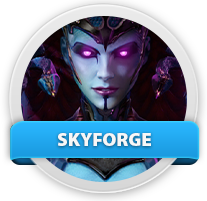The break-even analysis is a simple tool employed to graphically represent accounting data. We delve into the nitty gritty of net cash flow – how to calculate it, improve it, and keep it positive. It shows you’ve thought through your business model and understand what it takes to make a profit, boosting investor confidence and helping you secure funding to get your enterprise off the ground. This uncertainty can lead to financial troubles for your business, especially if demand doesn’t meet expectations.
Accounting For Managers – Management Accounting-Cost Volume Profit Analysis
Share content that resonates with your target market, run promotions, or simply interact with your customers with comments and conversations. Evaluate your payment processing setup to identify cost-saving opportunities. Switching to a more affordable provider can lower transaction fees and cut costs. This works best when demand is predictable, helping you get discounts without overstocking. This simply means subtracting break-even sales from actual sales, then divide the result by actual sales.
Confused.com Car Insurance: Your Ultimate Guide to Comparing, Choosing, and Saving
For example, a restaurant might cut costs by tweaking portion sizes or switching suppliers. (2) It assumes that all the costs can be divided into fixed and variable costs; that they vary in a linear fashion and that the principle of cost variability applies to them. Most people think about price in terms of how much it costs to make their product. You must still pay for fixed expenditures like insurance and web development. The break-even analysis establishes what level of sales is required to cover the company’s total fixed expenses by analyzing various pricing levels in relation to various levels of demand. For example, as output rises, the business may benefit from being able to buy inputs at lower prices (buying power), which would reduce variable cost per unit.
If they expand swiftly and a raw resource that you both use becomes scarce, the price may rise. Fixed costs are those that do not change regardless of how much of a product or service is sold. Fixed costs include facility rent or mortgage, equipment expenditures, salaries, capital interest, property taxes, and insurance premiums, to name a few.
Break-even analysis doesn’t factor in competitive forces or market trends. And, if you’re considering new business ideas or product offerings, you need to understand competitors’ strategies. Knowing your break-even point is a good way to track how your business is doing.
- Break-even analysis determines the number of units or amount of revenue that’s needed to cover your business’s total costs.
- A break-even chart is a graphical representation of the relationship between costs and revenue at a given time.
- It also gives you a clear sense of what you need to cover expenses, helping with budget planning and cash flow management.
- You might be plotting how to start a business, or you may have been running your enterprise for a while.
- It also provides useful data to help you figure out if new investments are worth the extra costs.
How does inflation affect businesses →
It helps the management in determining the most profitable prices for the products of an enterprise. It helps the management in the optimization of profits and maximum utilization of resources. In a nutshell, the break-even analysis technique provides a fillip to the management to accelerate the volume of production to earn maximum profit. In conclusion, break-even should be seen as a planning aid rather than a decision making tool.
It can be an excellent tool to use when you’re starting up a new business, as it helps you to decide whether the idea is viable. Plus, it provides you with information you can use when designing your pricing strategy. In addition, it’s a good idea to do a break-even analysis when you’re creating a new product, particularly if it’s particularly cost-intensive.
As such the break-even chart may not be proper indicator to cost analysis. In break-even chart analysis, no proper policy is complied with while classifying the costs. (6) The margin of safety of the firm can be known from this breakeven chart. Margin of safety can be known by deducting breakeven sales from the actual sales. It plays an important role as an indicator as to how the margin can be increased.
Explore alternative business ideas
Break-even is never 100% accurate and accuracy can wildly vary and differ depending on amount of products, assumptions made, what changes in the time period etc. Thus, it should be used to guide decisions related to do with the budget of the business. As the name suggests, variable costs go up and down depending on how much you sell. They might include raw materials, distribution costs, and other production-related expenses. Break-even analysis can also assist in identifying where to cut costs without cutting corners and compromising on quality. By analysing fixed and variable costs, you can see where savings can be made.
These tools help with working out break-even point and break-even analysis. You can find step-by-step online guides, including YouTube videos, which explain how to create a break-even analysis in Excel or Google Sheets, which makes the process easier. SumUp Kiosk could be just what you need to ramp up sales for your food and drink business. Boosting average order values by 25%, it can be a serious asset when it comes to getting to, and surpassing, your break-even point. Our self-service kiosks also slash queues by up to 50%, keeping both customers and staff smiling. Learn how to use social media for small business success so that you can better engage with customers and make your brand better known.
GoCardless helps you automate payment collection, cutting down on the amount of admin your team needs to deal with when chasing invoices. Find out how GoCardless can help you with ad hoc payments or recurring payments. So, Company A would need to sell 6,250 tennis racquets to break even. Anantha Nageswaran is the chief editor and writer at TheBusinessBlaze.com. He specialises in business, finance, insurance, loan investment topics.
- Break-even analysis is a financial tool used by businesses to determine the point at which total revenues equal total costs, meaning there is no profit and no loss.
- It determines if a product is worth selling or is too dangerous to sell.
- Examples include rent, salaries, vehicle and equipment leases, and subscription fees for your preferred small business accounting tools.
- Make it part of your regular bookkeeping for small businesses, and you’ll be ready to respond to whatever challenges arise.
- The cost-volume-profit relationship can best be visualized by charting the variables.
For a service business, variable costs might include travel expenses, supplies, or additional hourly wages. By knowing what it takes to reach break-even point, you can plan more effectively and avoid mistakes, like underestimating costs or ignoring cash flow needs. It also gives you a clear sense of what you need to cover expenses, helping with budget planning and cash flow management.
Each cup of lemonade costs $0.50 to make (variable cost), and you sell each cup for $1.50. A low breakeven point indicates that the company will begin to profit sooner, whereas a high breakeven point indicates that more products or services must be sold to reach that point. (1) The first and foremost limitation of the break-even analysis is that both cost and revenue should be taken into account to determine the break-even point. But this analysis assumes that prices do not change while in actual life, prices do change as a result of several factors, e.g., change in demand, fashion style, etc.
Break-even analysis is the process of calculating and evaluating an entity’s margin of safety based on collected revenues and corresponding costs. To put it another way, the research demonstrates how many sales are required to cover the cost of doing business. A SWOT analysis considers your business strengths, weaknesses, opportunities, and threats to help you understand where you sit in the market. This gives you insights into your competitive edge and can help you find the best price point to keep your business profitable without driving customers away. SumUp’s online store comes with no monthly costs and is easy to set up, with zero design or coding skills required. Examples include rent, salaries, vehicle and equipment leases, and subscription fees for your preferred small business accounting tools.
Make it part of your regular bookkeeping for small businesses, and you’ll be ready to respond to whatever challenges arise. Break-even analysis can help you calculate if your idea has a good chance of actually generating you a profit. Depending on the industry, it break even analysis advantages and disadvantages can take a few years for a startup to hit its break-even point. If you’re just starting out, this really highlights the need to keep a tight grip on your small business budget and stay sharp with finances as your business grows. Explain the concept of break-even analysis and its significance in financial planning. A break-even analysis can also be a useful tool for establishing realistic target sales for your crew.




